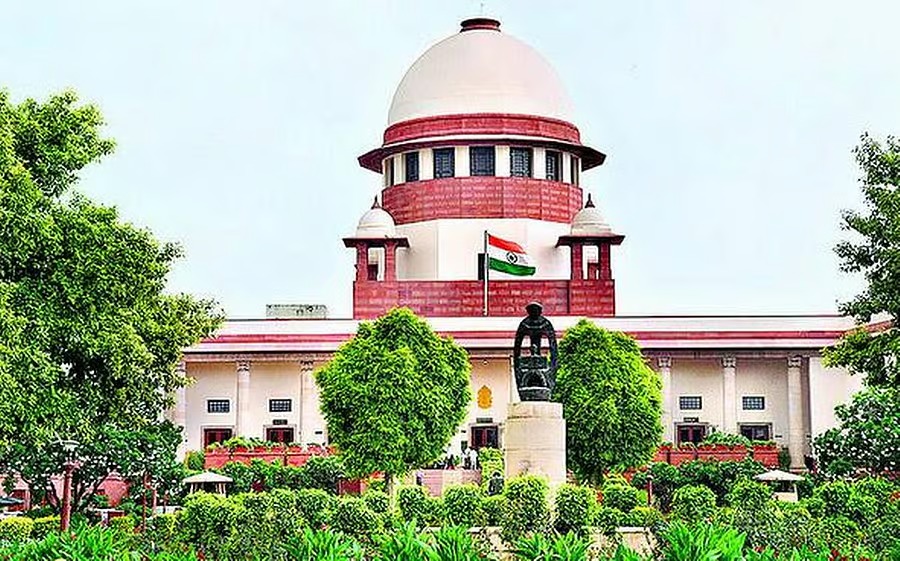@JUDGMENTTAG-ORDER
P. Subramonian Poti, J.@mdashThe court below by an order passed in the appeal pending before it held that a question of limitation for the appeal urged before it by the respondent to that appeal could not be considered at that stage and the matter will have to be considered as and when a printed copy of the judgment is produced by the party. That is the order which is attacked in this revision petition. To understand the scope of this attack, it is necessary to refer to certain facts. The judgment which was under appeal before the court below was one the length of which exceeded 700 words. If so, under R. 258(1) of the Kerala Civil Rules of Practice when a copy of such order or judgment is applied for by a party for the purpose of appeal such copy shall be printed. Sub-rule (2) of the same rule provides that no manuscript or typed copy of a judgment or order which has to be printed under sub-rule (1) shall be received for the purpose of any appeal except when the party files a petition for its provisional acceptance on the ground that he has applied for a printed copy but has not received the same and he requires urgent orders. In such cases the Court shall require the party to produce the printed copy within a stated time. Under Order XLI Rule 1(1) of the Code of Civil Procedure, every memorandum of appeal shall be accompanied by a copy of the decree appealed-from and, unless the Appellate Court dispenses therewith, of the judgment on which it is founded. The same rule also provides that the copy of the judgment shall be a printed copy in every case in which the High Court has prescribed that the judgment shall be printed when a copy is applied for the purpose of appeal. Evidently, the reference has to be understood as to R. 258 (1) of the Kerala Civil Rules of Practice. The position therefore is that where a judgment is of a length exceeding 700 words, a printed copy of the judgment has to be filed for the purpose of appeal except in cases where the appellate court dispenses with it. S. 12 (3) of the Limitation Act, 1963 provides for the exclusion of time requisite for obtaining a copy of the judgment on which the decree is founded where a decree is appealed from.
2. The judgment which was under appeal before the court below exceeded 700 words in length and therefore for the purpose of the appeal the judgment had to be printed. The plaintiff who was the appellant before the court below applied for a printed copy of the judgment but the printing is not over. It is too early to decide whether, as and when the printed copy is obtained and produced, the appeal could be seen to be in time. But for the purpose of the appeal the plaintiff has apparently obtained another certified copy and has produced it along with the appeal. If time for filing the appeal is reckoned on the basis of the certified copy then the appeal would be barred and the respondent-defendant wanted the court below to bold that it was so barred. The answer to this was that the certified copy of the judgment filed by the appellant was only a provisional copy, that time was not to be reckoned on the basis of that copy, that the appellant was bound to file a printed copy, that he had applied for such printed copy, that as and when it was produced the appeal would be seen to be in time and that since that is the copy which he is bound to produce, the question of limitation cannot be decided until such copy is filed in court. That contention has been accepted and the court has found that it is too early to say whether the appeal is barred or not.
3. Apparently what the plaintiff''s stand is quite reasonable. It is agreed that for the purpose of appeal a copy of the judgment as well as the decree are necessary and the time taken for obtaining these could be excluded. As already pointed out, R. 258 (1) read with Order XLI Rule 1(1) of the CPC obliges the plaintiff to file a printed copy of the judgment in the appeal before the court below. He has applied for such printed copy. R. 258 (2) of the Kerala Civil Rules of Practice enables a certified copy to be filed for provisional acceptance but that does not absolve the obligation to file the printed copy in due course. Provisionally, such a certified copy was filed in the court below and time for filing the printed copy was also sought. Therefore, though what accompanied the memorandum of appeal was a certified copy, that was only provisional and what ought to have accompanied was printed copy of the judgment and if that be so, it is such a copy that has to be reckoned for the purpose of considering whether there is limitation for the appeal. This position is evidently quite clear. Nevertheless, counsel for the appellant has been inspired to contend otherwise apparently because of reliance placed upon a decision of the Supreme Court reported in The
4. The question before the Supreme Court in the case adverted to was whether an appeal accompanied by a certified copy of the order appealed against should be considered to have been filed in time on the basis of the copy so filed along with the memorandum of appeal when it is seen that under two other applications the appellant had obtained two other copies which if taken into account for the purpose of reckoning limitation would show that the appeal was out of time. The court held that the mere fact that some other copy had been obtained by the party was of no consequence, that it was open to him to apply for the copy at any time within the period of limitation and if deducting the time taken for obtaining such copy the appeal is within the period of limitation that would be sufficient. The fact that be would have been able to get copies earlier is of no relevance. The question is whether on the copy which was intended for the appeal, the appeal was in time. Though this rule does not militate against what is said in regard to the case before me, counsel contends that there is an observation in the judgment of the Supreme Court and a similar observation in the judgment of the Madras High Court which must be taken to be decisive on the question, and the passage pointed out by the learned counsel is at para 11 of the judgment of the Supreme Court:
The leading case on the subject is the decision of the full bench of the Madras'' High Court in
Counsel would call upon this court to read the words "copy which is filed with the memorandum of appeal" as conclusive of the matter because, according to him, if that be the case, the copy that was filed along with the appeal in this case being the certified copy, time should be reckoned with reference to that copy and that would mean that the appeal is barred. It is quite evident that when their Lordships of the Supreme Court referred to the time taken for the copy filed with the memorandum of appeal they were making reference to this as opposed to the ideal lesser period which might have been occupied if the application for the copy had been filed on some other date. We can conceive of cases where no copy of the judgment is filed along with the appeal at all and time is obtained from court to file such copy. Does it mean that in such cases the time need not be reckoned with reference to the judgment at all. Certainly not. Time will have to be reckoned with reference to the copy of the printed judgment which accompanies the memorandum of appeal or which ought to have accompanied the memorandum of appeal where it has not accompanied it. Where a printed copy has only been applied for and time is taken to produce it at the time of filing the appeal, as and when it is produced, the period of limitation will be reckoned with "reference to the printed copy of the judgment so produced, It was the obligation of the appellant in the case before us to have filed the printed copy of the judgment and a certified copy was only provisionally filed under the rule. Therefore, the copy for the purpose of the appeal, and which ought to have accompanied the appeal, is the printed copy of the judgment and that is the copy with reference to which the period of limitation will have to be calculated. That is so notwithstanding the fact that a provisional copy has been produced. The provisional copy might have been applied for long after the period fixed for filing the appeal and that may be because of the urgency of filing an appeal. That does not is any way affect the right of the party to file the appeal, when, judged on the basis of the printed copy which he is obliged to produce for the purpose of this appeal, there is no limitation for the appeal.
The court below was therefore quite in order in holding that the question of limitation would arise only as and when the printed copy of the judgment becomes available. The revision is without any merit and it is therefore dismissed with costs.

